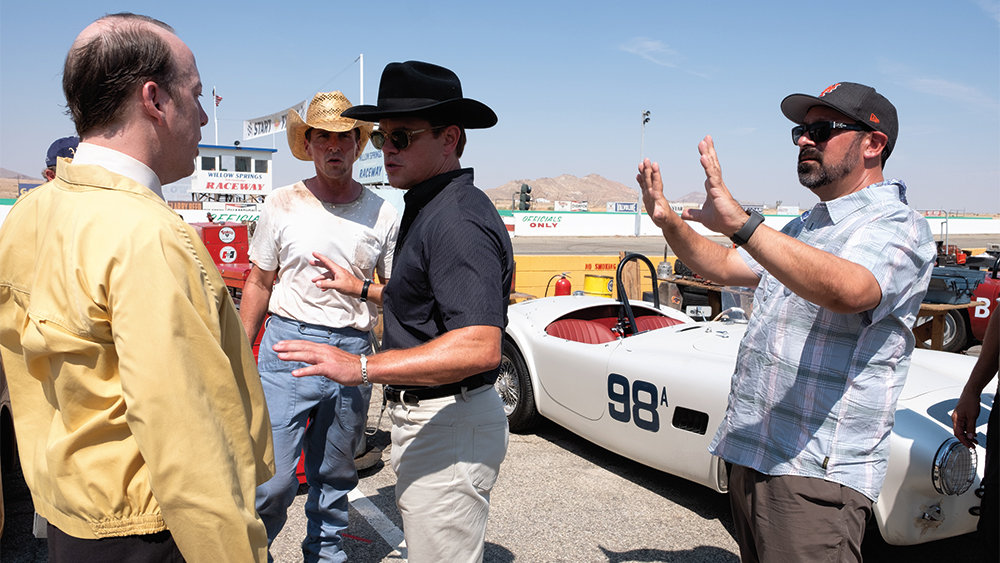‘Ford v Ferrari’ Sound Team Balanced Emotion and Intensity
By Daron James
LOS ANGELES (Variety.com) – While on the surface, director James Mangold’s “Ford v Ferrari” is a story about racing, at the heart of it is a character-driven piece about a renegade named Ken Miles (Christian Bale) and the friendship he forges with Carroll Shelby (Matt Damon) as he chases a lifelong dream. For the sound team, the characters of the story were far more important than the mechanics around them.
For production sound mixer Steven Morrow, the focus was capturing the dialogue and emotional arc of the characters. While post would record the brunt of the sound effects Morrow detailed a baseline for them to follow. Special microphones were used to record the dialogue during the intense racing scenes.
“We used DPA 60 lavaliers both on the actors and for planting on the vehicles,” says Morrow. “You wouldn’t normally use those mics for dialogue scenes as they’re reserved for jet-engine-level noise, but because of how loud the cars were and the way Christian [Bale] was acting in the moment, it was the best mic.”
Production sound employed several unique techniques on the project. “The way Jim [Mangold] works is he will watch a scene and make changes as it progresses so we had to anticipate anything,” Morrow says. “We ended up placing a microphone on anyone who could potentially speak and record every piece of possible dialogue. This way post can sift through it and decide what’s gold and what isn’t.”
In post, supervising sound editor Donald Sylvester finessed an aural authenticity to the library of original sounds.
“Jim isn’t into sound effects. He’s into the effect of sound,” says Sylvester. “He wants to be totally immersed in a scene and for the sound to support the story. Any red flags he hears we throw them out.”
This was especially true for the dramatic 25-minute Le Mans race in which Miles takes on Ferrari driving the iconic Ford GT40. The grandstands were a cornucopia of sounds that included pit row, hundreds of spectators, a PA system covering the race and the throttle-pushing cars.
To create the soundscape, a Ford GT40 was located in Ohio where the owner allowed them to record several elements including its engine, transmission, tailpipe and interior. Their next stop was finding the Ferrari, which they did in Atlanta.
“In the end we might have had too many options, but we were able to use everything to create a select group of sounds for when the audience is inside the vehicle versus outside,” notes Sylvester.
Subliminally heightening the full range of sounds was the use of Dolby Atmos dialed in by rerecording mixers Paul Massey and David Giammarco. Massey, who mixed the dialogue and music portions, and Giammarco the effects, keyed in on the legibility and richness of each word so that not a single story point would be lost.
“Our fundamental approach was the character storytelling and how the friendship between Ken and Shelby evolved,” says Massey.
For the Le Mans race the soundscape led the audience without overwhelming them. “The sound effects had to be powerful in the racing moments but it was important for us to track the emotion of each scene and strike a balance,” says Giammarco. “What served and complimented each scene the best were the guidelines for us.”
The key to the immersion was detailing the exact frequency, rhythm and level of each element whether it was dialogue, effects or music.
“A lot of it came from what we decided to pull out rather than what we decided to put in,” adds Massey. “It was a constant handoff and dance between us.”

